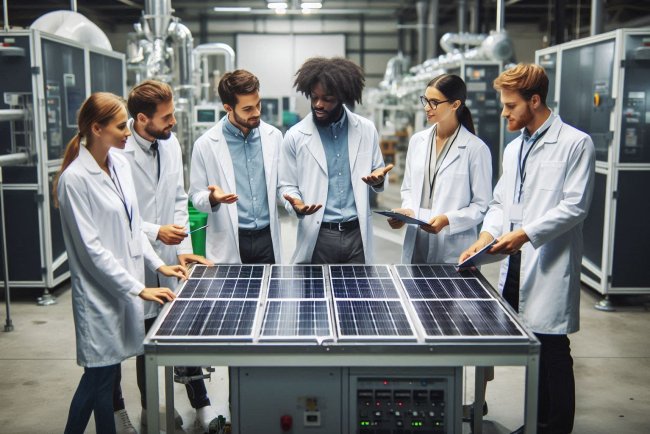Advances in Hydrogen Production Technologies
Explore the latest advancements in hydrogen production technologies, from electrolysis to solar-driven processes. Stay informed and up-to-date in the field.

Advances in Hydrogen Production Technologies
Hydrogen is considered a promising clean energy carrier that can play a crucial role in the transition to a low-carbon economy. As the demand for hydrogen continues to grow, significant advancements have been made in hydrogen production technologies. These advancements aim to increase efficiency, reduce costs, and minimize environmental impact. In this article, we will explore some of the recent developments in hydrogen production technologies.
1. Electrolysis
Electrolysis is a well-established method for producing hydrogen by splitting water molecules into hydrogen and oxygen using an electric current. Recent advancements in electrolysis technology have focused on improving efficiency and reducing energy consumption. Proton exchange membrane electrolysis (PEM) and solid oxide electrolysis cells (SOEC) are two emerging electrolysis technologies that offer higher efficiencies and lower costs compared to traditional alkaline electrolysis.
2. Steam Methane Reforming (SMR)
Steam methane reforming is currently the most common method for industrial hydrogen production. Recent advances in SMR technology have focused on process intensification and integration with carbon capture and storage (CCS) to reduce greenhouse gas emissions. By optimizing catalysts and reactor design, researchers have been able to increase the efficiency of SMR and reduce its environmental impact.
3. Biomass Gasification
Biomass gasification is a renewable approach to hydrogen production that involves converting biomass feedstocks into a syngas rich in hydrogen. Recent advancements in biomass gasification technology have focused on improving feedstock flexibility, enhancing gasification efficiency, and reducing tar formation. Integrated gasification combined cycle (IGCC) systems have been developed to produce both electricity and hydrogen from biomass feedstocks, offering a sustainable and low-carbon energy solution.
4. Photoelectrochemical (PEC) Water Splitting
Photoelectrochemical water splitting is an emerging technology that utilizes solar energy to split water into hydrogen and oxygen. Recent developments in PEC technology have focused on developing efficient and stable photoelectrodes, as well as improving the overall system efficiency. By integrating PEC systems with advanced materials and catalysts, researchers aim to harness solar energy for sustainable hydrogen production on a large scale.
5. High-Temperature Thermochemical Processes
High-temperature thermochemical processes, such as the sulfur-iodine and hybrid sulfur cycles, offer a promising approach to hydrogen production using heat from concentrated solar power or nuclear reactors. Recent advancements in thermochemical processes have focused on improving cycle efficiency, reducing material degradation, and increasing hydrogen production rates. These processes have the potential to provide a reliable and scalable hydrogen production method that can operate with intermittent renewable energy sources.
6. Microbial Electrolysis Cells (MECs)
Microbial electrolysis cells are a bioelectrochemical technology that uses microorganisms to produce hydrogen from organic matter. Recent research in MECs has focused on improving microbial communities, optimizing reactor design, and enhancing system performance. By harnessing the metabolic activities of microbes, MECs offer a sustainable and energy-efficient approach to hydrogen production from wastewater, organic waste, and renewable biomass.
7. Plasma Reforming
Plasma reforming is a novel approach to hydrogen production that involves using high-temperature plasma to break down hydrocarbon feedstocks into hydrogen and carbon. Recent advancements in plasma reforming technology have focused on enhancing reaction kinetics, improving energy efficiency, and reducing carbon emissions. Plasma reforming offers a promising pathway to produce hydrogen from a wide range of feedstocks, including natural gas, biomass, and waste materials.
Conclusion
Advances in hydrogen production technologies are essential for accelerating the transition to a sustainable and low-carbon energy future. By improving efficiency, reducing costs, and minimizing environmental impact, these advancements pave the way for hydrogen to play a significant role in decarbonizing various sectors, such as transportation, industry, and power generation. Continued research and development in hydrogen production technologies are crucial to unlocking the full potential of hydrogen as a clean and versatile energy carrier.
What's Your Reaction?

















